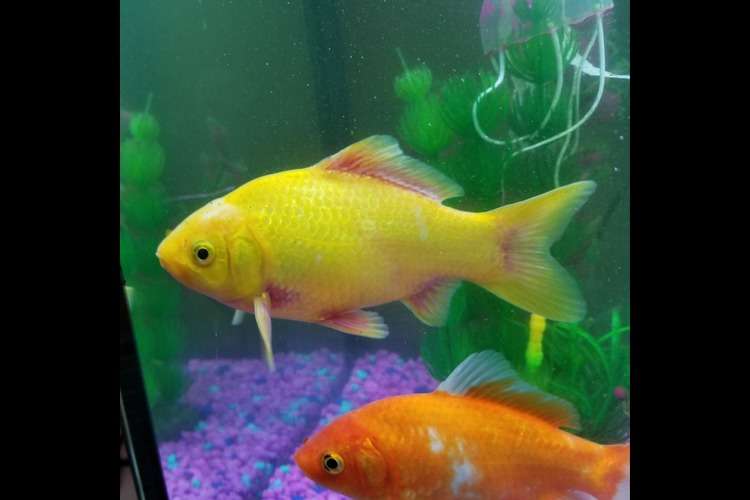Seasonal Aquarium Care: Preparing for Weather Changes
Get tips on preparing your aquarium for seasonal changes, from temperature control to feeding adjustments, to ensure your fish stay healthy throughout the year.
Table of Contents
- Temperature Control
- Water Quality Maintenance
- Adjusting the Lighting
- Feeding Adjustments
- Placement of the aquarium and decoration
- Look out for Seasonal Pests
- Faq
- Conclusion
Aquarium care is important all-year-round, but with a change in seasons, your fish tank needs more attention to ensure healthy and happy aquatic life. Seasonal changes can affect temperature, lighting, and the quality of water in the tank, so it's advisable to adjust your maintenance routine according to the season.
Temperature Control
Maintaining stable water temperatures is the most crucial factor of seasonal aquarium care since fish are sensitive to changes in temperature and any rapid changes may stress or sicken the fish.
Winter: During colder months, your aquarium’s water temperature may drop, so consider using a heater to maintain a consistent temperature. Aim for a temperature range that suits your fish species, typically between 72°F and 78°F (22°C to 26°C) for tropical fish.
Summer: In warmer months, your tank might overheat, especially if it's near a window or exposed to direct sunlight. Consider moving your tank to a cooler spot or using a cooling fan to regulate the water temperature.
Water Quality Maintenance
The changes in the environment can also affect the quality of water in your aquarium. Depending on the season, you may need to change your maintenance schedule to ensure that the water is clean and safe for your fish.
Winter: Lower temperatures can reduce the evaporation rates, which may increase the dissolved solids in the water. Water changes and monitoring your filter system can keep the water quality in good condition.
Summer: Warmer temperatures could cause water to evaporate more quickly, therefore lowering the water level. Monitor and maintain the tank with dechlorinated water as often as necessary.
Adjusting the Lighting
The sunlight varies with the seasons, which can mean that your aquarium will sometimes require less lighting. Any fish and plants in this tank need a regular light cycle for survival.
Winter: Short days will decrease the amount of natural light in your aquarium, and artificial lighting may need to be increased. Provide 10-12 hours of light daily to replicate the natural light cycle and plant growth.
Summer: More daylight hours may cause overgrowth of algae if your tank receives too much natural light. Consider altering the artificial lighting schedule to avoid too much exposure, which causes an imbalance in the water conditions.
Feeding Adjustments
Seasonal changes can also influence your fish's activity level and feeding habits.
Winter: Some fish may eat lesser in winter. Reduce the amount given to your fish to help prevent uneaten food, which decomposes and affects the water quality. Monitor your fishes to ensure they are eating enough.
Summer: With warmer temperature, your fish's metabolic rate may be higher to be more active and hungrier than ever. Make sure they get a balanced diet while not overfeeding them or water quality problems will eventually occur.
Placement of the aquarium and decoration
Seasonal changes come when you are forced to relocate your aquarium or probably adjust the decorations inside to offer an appropriate setting to your fishes.
Winter: Time You must ensure that drafts from windows cause sudden rises in temperature or cold on the windows; place them at a distant from where stress sources to the fishes. Put your tank at a comfortable and stable area.
Summer: Keep your tank away from direct sunlight or heat sources. Direct sun exposure may cause algae blooms, while heat from radiators or vents may overheat the water. You may also want to reduce or remove some decorations that can trap heat.
Look out for Seasonal Pests
Some of the pests might be more active in a specific season. For example, certain snails or insects. Keep checking the tank for any unwanted pests. Remove them immediately so that your aquarium is not disrupted.
Faq
1.How to maintain the right temperature in winter?
Use a heater to keep the water between 72°F-78°F (22°C-26°C).
2.How to prevent overheating in summer?
Move the tank away from direct sunlight and use a cooling fan.
3.How to maintain water quality in winter?
Perform regular water changes and monitor the filter system.
4.How to adjust lighting in winter?
Increase artificial lighting to 10-12 hours daily.
5.How to prevent algae growth in summer?
Limit sunlight exposure and adjust artificial lighting.
6.How to adjust feeding in winter?
Feed less as fish eat less in colder months.
7.How to feed in summer?
Fish may eat more, so feed them a balanced diet without overfeeding.
8.Where to place the tank in winter and summer?
Avoid drafts in winter and direct sunlight/heat in summer.
9.Do decorations need seasonal changes?
Remove heat-trapping decorations in summer.
10.How to manage seasonal pests?
Regularly check and remove pests like snails or insects.
11.Why is seasonal care important?
It ensures stable conditions, promoting fish health year-round.
Conclusion
By knowing how weather changes affect your aquarium, you can keep your aquarium healthy and stable throughout the year. Seasonal care enhances the aesthetic beauty of the tank and ensures longevity and good health for your aquatic life. Regular maintenance, observation, and adjusting your routine will keep your aquarium thriving no matter what season it is.

















